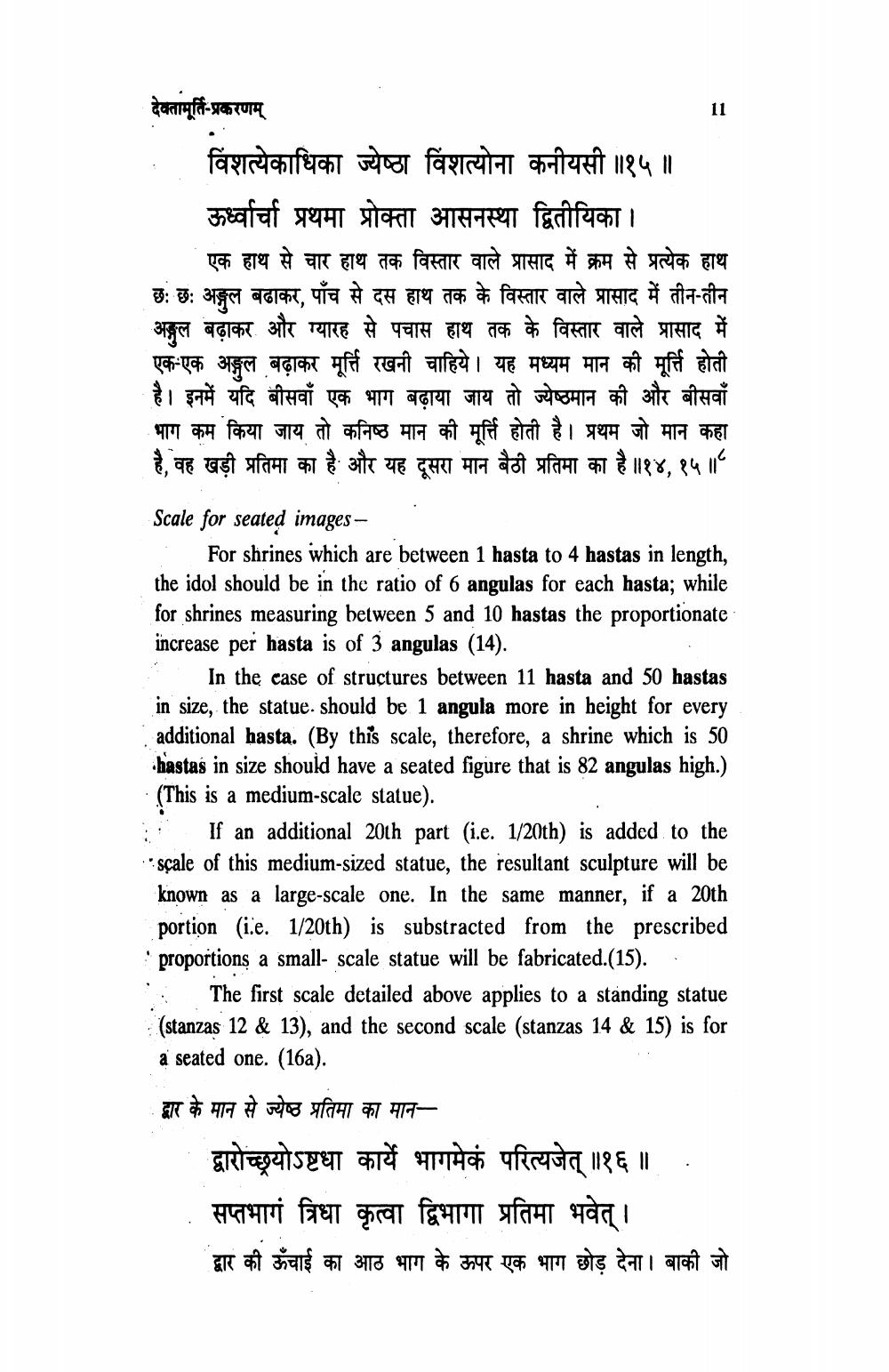________________
देवतामूर्ति-प्रकरणम्
11
विंशत्येकाधिका ज्येष्ठा विंशत्योना कनीयसी ॥१५ ॥
ऊर्ध्वार्चा प्रथमा प्रोक्ता आसनस्था द्वितीयिका ।
एक हाथ से चार हाथ तक विस्तार वाले प्रासाद में क्रम से प्रत्येक हाथ छ: छः अङ्गुल बढाकर, पाँच से दस हाथ तक के विस्तार वाले प्रासाद में तीन-तीन अङ्गुल बढ़ाकर और ग्यारह से पचास हाथ तक के विस्तार वाले प्रासाद में एक-एक अङ्गुल बढ़ाकर मूर्ति रखनी चाहिये । यह मध्यम मान की मूर्ति होती है। इनमें यदि बीसवाँ एक भाग बढ़ाया जाय तो ज्येष्ठमान की और बीसवाँ भाग कम किया जाय तो कनिष्ठ मान की मूर्ति होती है। प्रथम जो मान कहा है, वह खड़ी प्रतिमा का है और यह दूसरा मान बैठी प्रतिमा का है ॥१४, १५ ॥
Scale for seated images
For shrines which are between 1 hasta to 4 hastas in length, the idol should be in the ratio of 6 angulas for each hasta; while for shrines measuring between 5 and 10 hastas the proportionate increase per hasta is of 3 angulas ( 14 ).
In the case of structures between 11 hasta and 50 hastas in size, the statue. should be 1 angula more in height for every additional hasta. ( By this scale, therefore, a shrine which is 50 ·hastas in size should have a seated figure that is 82 angulas high . ) (This is a medium-scale statue).
If an additional 20th part (i.e. 1/20th) is added to the .. scale of this medium-sized statue, the resultant sculpture will be known as a large-scale one. In the same manner, if a 20th portion (i.e. 1/20th) is substracted from the prescribed proportions a small- scale statue will be fabricated.(15).
The first scale detailed above applies to a standing statue ( stanzas 12 & 13), and the second scale ( stanzas 14 & 15 ) is for a seated one. (16a).
द्वार के मान से ज्येष्ठ प्रतिमा का मान
द्वारोच्छ्रयोऽष्टधा कार्ये भागमेकं परित्यजेत् ॥१६ ॥
सप्तभागं त्रिधा कृत्वा द्विभागा प्रतिमा भवेत् ।
द्वार की ऊँचाई का आठ भाग के ऊपर एक भाग छोड़ देना । बाकी जो




